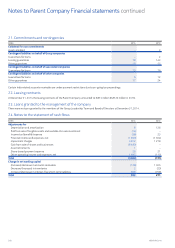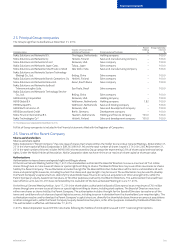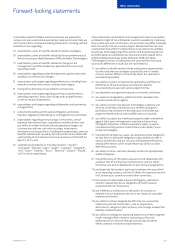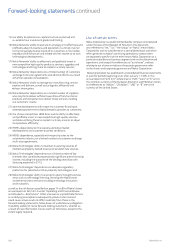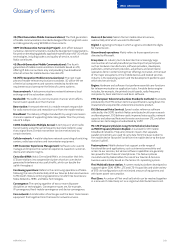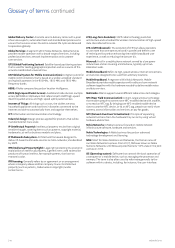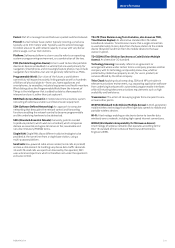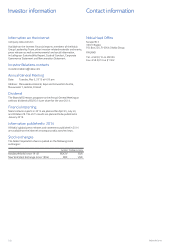Nokia 2014 Annual Report Download - page 212
Download and view the complete annual report
Please find page 212 of the 2014 Nokia annual report below. You can navigate through the pages in the report by either clicking on the pages listed below, or by using the keyword search tool below to find specific information within the annual report.210 NOKIA IN 2014
Global Delivery Center: A remote service delivery center with a pool
of services experts, automated tools and standardized processes to
ensure that services across the entire network life cycle are delivered
to operators globally.
Global Services: A segment within Nokia Networks. Global Services
provides mobile operators with a broad range of services, including
professional services, network implementation and customer
care services.
GPS (Global Positioning System): Satellite-based positioning system
that is used for reading geographical position and as a source of the
accurate coordinated universal time.
GSM (Global System for Mobile Communications): A digital system for
mobile communications that is based on a widely-accepted standard
and typically operates in the 900 MHz, 1800 MHz and 1900 MHz
frequency bands.
HERE: A Nokia company focused on location intelligence.
HSPA (High-Speed Packet Access): A wideband code division multiple
access (WCDMA or 3G) feature that refers to both 3GPP high-speed
downlink packet access and high-speed uplink packet access.
Internet of Things: All things such as cars, the clothes we wear,
household appliances and machines in factories connected to the
Internet and able to automatically learn and organize themselves.
ICT: Information and communications technology.
Industrial design: Design process applied for products that will be
manufactured at mass scale.
IP (Intellectual Property): Intellectual property results from original
creative thought, covering items such as patents, copyright material,
trademarks, as well as business models and plans.
IP Multimedia Subsystem: Architectural framework designed to
deliver IP-based multimedia services on telco networks; standardized
by 3GPP.
IPR (Intellectual Property Right): Legal right protecting the economic
exploitation of intellectual property, a generic term used to describe
products of human intellect, for example patents, that have an
economic value.
IPR licensing: Generally refers to an agreement or an arrangement
where a company allows another company to use its intellectual
property (such as patents, trademarks or copyrights) under
certain terms.
LTE (Long-Term Evolution): 3GPP radio technology evolution
architecture and a standard for wireless communication of high-speed
data. Also referred to as 4G.
LTE-A (LTE Advanced ): The evolution of LTE that allows operators
to use more than one spectrum band in parallel and denes a set
of techniques focused on enhancing the mobile broadband user
experience, as well as reducing the cost per bit.
Microcell: A cell in a mobile phone network served by a low power
cellular base station covering a limited area, typically up to two
kilometers wide.
Mobile broadband: Refers to high-speed wireless internet connections
and services designed to be used from arbitrary locations.
Mobile Broadband: A segment within Nokia Networks. Mobile
Broadband provides mobile operators with radio and core network
software together with the hardware needed to deliver mobile voice
and data services.
Multiradio: Able to support several dierent radio access technologies.
NFC (Near Field Communication): A short-range wireless technology
that enables people to connect one NFC-enabled device with another,
or to read an NFC tag. By bringing one NFC-enabled mobile device
close to another NFC device, or to an NFC tag, people can easily share
content, access information and services, or pay for goods.
NFV (Network Functions Virtualization): Principle of separating
network functions from the hardware they run on by using virtual
hardware abstraction.
Nokia Networks: A Nokia business focused on mobile network
infrastructure software, hardware and services.
Nokia Technologies: A Nokia business focused on advanced
technology development and licensing.
NSN: Short for Nokia Solutions and Networks, the former name of
our Nokia Networks business. From 2007, NSN was known as Nokia
Siemens Networks until Nokia acquired Siemens’ 50% stake in the joint
venture in 2013.
OS (Operating system): Software that controls the basic operation of
a computer or a mobile device, such as managing the processor and
memory. The term is also often used to refer more generally to the
software within a device, including, for instance, the user interface.
Glossary of terms continued


